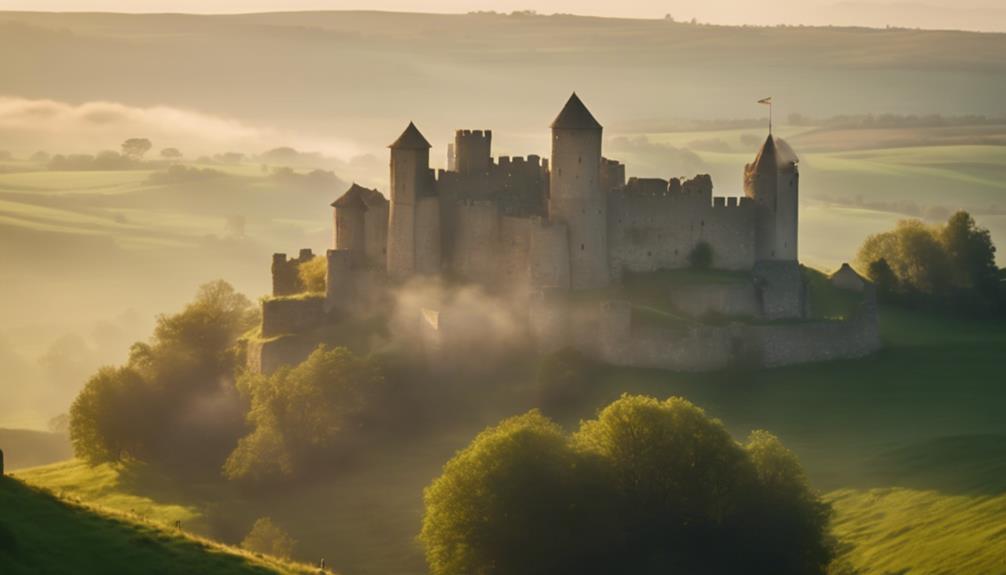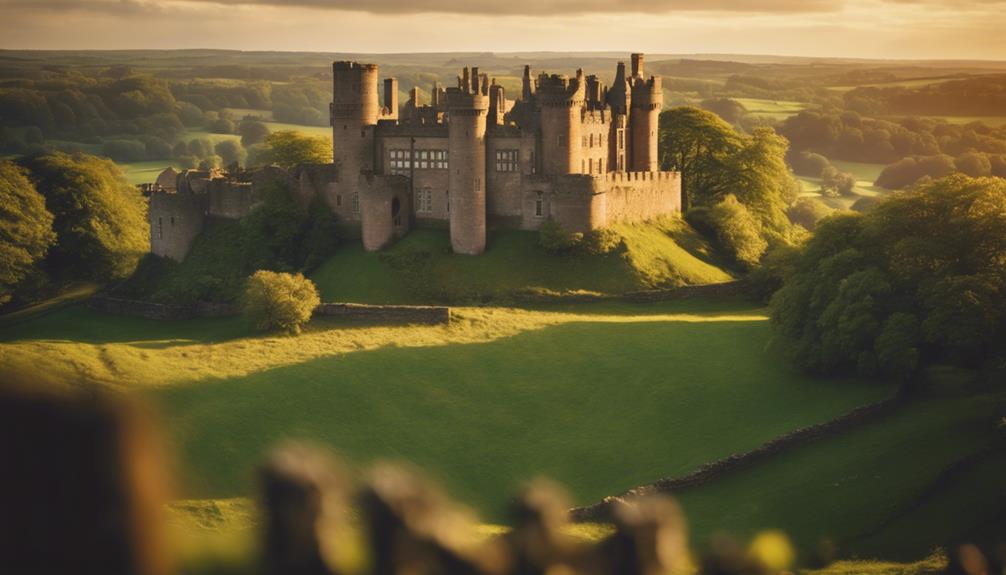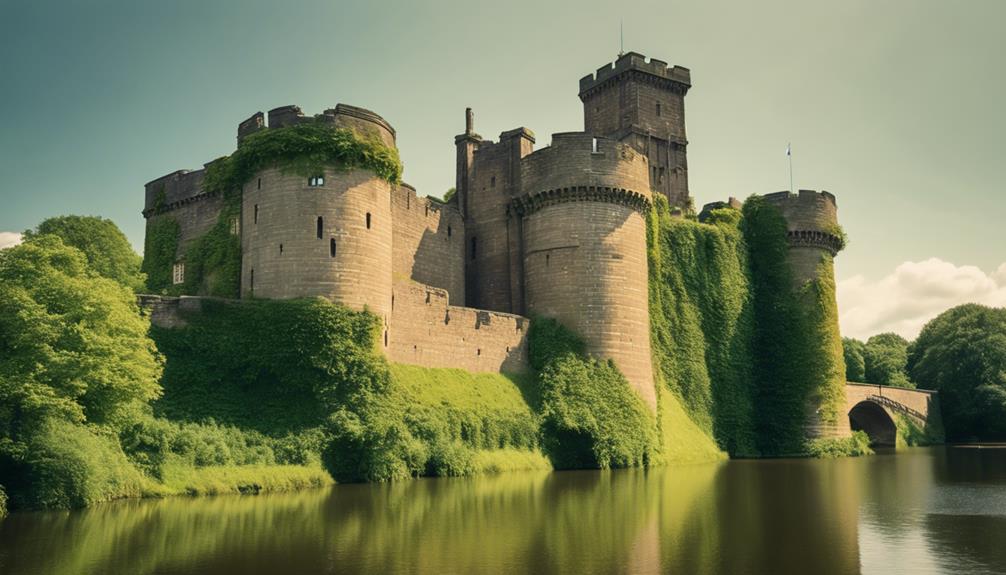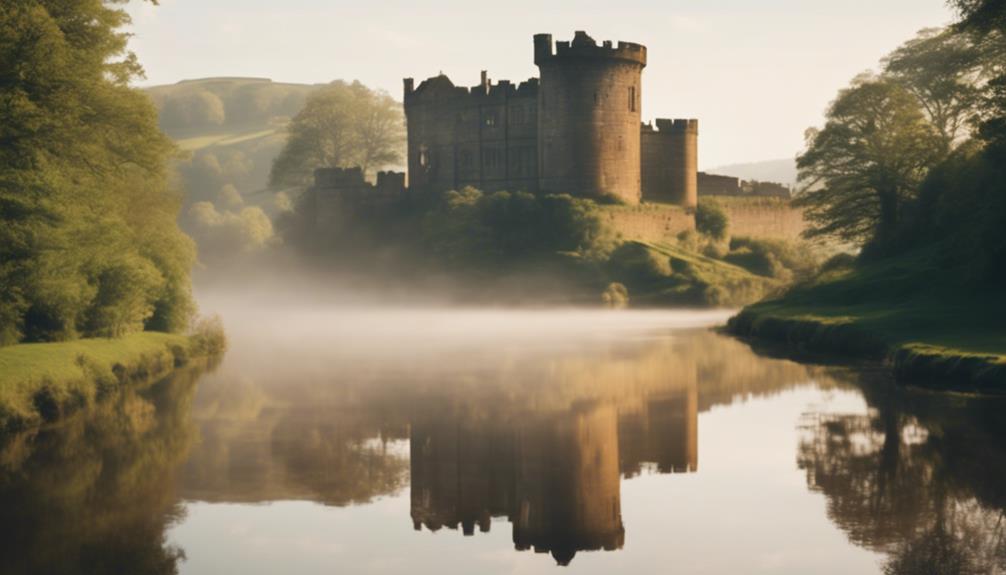Exploring Staffordshire's Rich History Through Its Castles
Exploring Staffordshire's rich history through its castles provides a window into the region's past, starting with Norman fortifications like Stafford Castle, constructed in 1073. You'll observe the Norman motte and bailey design, later enhanced with Tudor paneling and Georgian windows. Significant events such as the Norman Conquest and the English Civil War underscore the historical importance of these castles. Stafford Castle is not alone; Tamworth Castle also serves as evidence of the area's architectural and cultural development. Engaging educational programs and community events transform these castles into not just historical sites, but vibrant hubs of local heritage. Delve deeper to uncover even more intriguing tales.
Key Points to Remember
- Stafford Castle showcases Norman strength and strategic importance since its construction in 1073.
- Tamworth Castle boasts intact structures and a vibrant community atmosphere, enriching historical comprehension.
- Staffordshire castles display a fusion of Saxon, Viking, Norman, and Tudor architectural influences.
- Educational programmes and guided tours at Stafford Castle provide hands-on historical learning experiences.
- Key historical events such as the Norman Conquest and English Civil War are brought to the forefront through these castles.
Origins and Early History

Constructed by the Normans in 1073, Stafford Castle began as a motte and bailey fortress. This early medieval fortification was a demonstration of the strength and strategic acumen of the Normans following their conquest of England. You can imagine the castle's towering wooden keep on its raised earthwork, surrounded by a protective bailey, embodying both defence and dominance.
However, the site's history isn't solely defined by the Normans. Before their arrival, Aethelflade, Lady of the Mercians, had already left an indelible mark on the region. Her efforts to secure Tamworth for the Saxons highlight the area's significance long before the Norman conquest. Aethelflade's legacy underscores the castle's deep-rooted historical importance, bridging Saxon influences with Norman ambitions.
As you explore the origins and early history of Stafford Castle, you'll find a rich tapestry of medieval fortifications blending different cultural influences. The Normans transformed the landscape with their architectural prowess, yet the echoes of Saxon resilience and strategy lingered.
This fusion of histories provides a sense of belonging, connecting you to a lineage of strategic minds and fortification experts who shaped the region. Understanding this blend of influences helps you appreciate the castle's role in England's medieval narrative.
Architectural Evolution
Stafford Castle's architectural evolution vividly reflects the dynamic changes in design and functionality over the centuries. Initially constructed in 1073 as a Norman motte and bailey structure, the castle underwent significant transformation over time. The Norman influences can be seen in the original stone shell keep added a century later, showcasing classic medieval fortification techniques.
During the Tudor period, the castle adopted new architectural styles. Intricate oak paneling and dowels in the Great Hall, along with grand carvings, reflect the Tudor features that added an element of grandeur. These alterations transformed the castle into not just a fortress but a symbol of wealth and style.
Subsequently, the Townsend family modernised Stafford Castle, introducing Georgian-style windows and iron fireplaces. This modernisation reflected changing tastes and a move towards comfort and elegance.
A brief overview of the architectural phases of Stafford Castle:
| Era | Key Features | Influences |
|---|---|---|
| Norman | Motte and bailey, stone shell keep | Norman influences |
| Tudor | Oak paneling, dowels, grand carvings | Tudor features |
| Georgian | Windows, iron fireplaces | Georgian style |
| Modern Era | Preservation efforts | Local council |
These transformations over time make Stafford Castle a captivating insight into architectural history.
Key Historical Events

Spanning centuries, Stafford Castle has witnessed pivotal events such as the Norman Conquest and the English Civil War, each leaving an indelible mark on its storied walls.
During the Norman Conquest, the castle played a significant role in establishing Norman control over the region, a reflection of its battle significance. It stood as a symbol of Norman power, its cultural impact resonating through the ages.
In the English Civil War, Stafford Castle's military importance was undeniable. It became a stronghold for Royalist forces, showcasing its enduring strategic value. The castle's defences were tested, and its walls bore the scars of conflict, emphasising its vital role in shaping the nation's history.
Stafford Castle's royal connections add another layer of intrigue. It was owned by noble families with close ties to the monarchy, weaving it into the fabric of England's aristocratic heritage. These connections highlight the castle's importance not just as a military asset but as a symbol of royal influence and power.
Community Engagement
Tamworth Castle actively involves the community through engaging educational programmes and heritage promotions. By highlighting the castle's rich history, these programmes foster a sense of pride and belonging among local residents. You can participate in workshops and guided tours that explore the castle's past, offering hands-on learning experiences. These activities not only educate but also help safeguard local heritage, creating a bridge between the past and present.
Visitor engagement is a key focus at Tamworth Castle. The castle hosts numerous events and activities that attract tourists and locals alike, boosting visitor numbers. This increased footfall has a significant economic impact on the town, benefiting local businesses and creating job opportunities. The castle's popularity ensures that the local economy thrives, making it a central part of community life.
Local volunteers play an important role in the castle's operations, from maintenance to organising events. Their involvement ensures the castle remains a well-maintained and cherished landmark. Community-driven initiatives showcase the collective pride in Staffordshire's heritage, demonstrating how historical sites like Tamworth Castle can unite and benefit the community both culturally and economically.
Notable Castles in Staffordshire

Explore the diverse history and impressive architecture of Staffordshire through its most renowned castles. Stafford Castle, with its striking motte and bailey design, beckons you to wander its extensive grounds. This historical site showcases a fusion of Saxon, Viking, Norman, and Tudor influences. Visitors can partake in informative guided tours and attend various castle events that breathe life into the past. The castle's enhancements, such as Georgian-style windows and iron fireplaces, add depth to its captivating narrative.
Tamworth Castle presents a well-preserved and complete structure for history enthusiasts to delve into. Beyond its historical significance, the Pleasure Grounds host lively events that foster a vibrant community spirit. Guided tours offer valuable insights into the castle's enduring history and architecture.
Below is a brief comparison of these notable castles:
| Castle | Key Features | TripAdvisor Rating |
|---|---|---|
| Stafford Castle | Motte and bailey, Saxon to Tudor history, tours | 1529 reviews |
| Tamworth Castle | Complete building, live events, community atmosphere | 684 reviews |
Immerse yourself in Staffordshire's historical landmarks, and you'll discover a sense of belonging within these ancient walls, where heritage and community intertwine.
Frequently Asked Questions
How many castles are there in Staffordshire?
You'll find several castles in Staffordshire, each showcasing unique castle architecture and medieval fortifications. From Stafford Castle to Tamworth Castle, exploring these sites connects you deeply with the region's rich history and vibrant heritage.
What is the history of Stafford?
You'll find Stafford's history fascinating, with ancient settlements dating back to the Saxons. Medieval trade flourished here, influenced by key figures like Aethelflade. The community's pride in preserving this legacy is palpable everywhere you look.
What is Staffordshire famous for?
You'll adore Staffordshire for its Pottery Heritage and connections to the Industrial Revolution. Discover the ceramics of Stoke-on-Trent, the magnificent stately homes, and the acclaimed Lymestone Brewery. Immerse yourself in a community that values its illustrious history.
What happened to Stafford Castle?
Stafford Castle underwent significant restoration efforts, unveiling intriguing archaeological discoveries. It now actively involves the local community through educational programmes and events, fostering a sense of belonging while safeguarding its historical significance.
Conclusion
By exploring Staffordshire's castles, you'll uncover a tapestry of history, from their origins to their architectural evolution and key historical events.
These castles aren't just stone and mortar; they're community hubs that continue to engage and educate locals and visitors alike.
So, whether you're a history buff or just curious, Staffordshire's castles offer a fascinating glimpse into the past, making it a region well worth your time and exploration.

